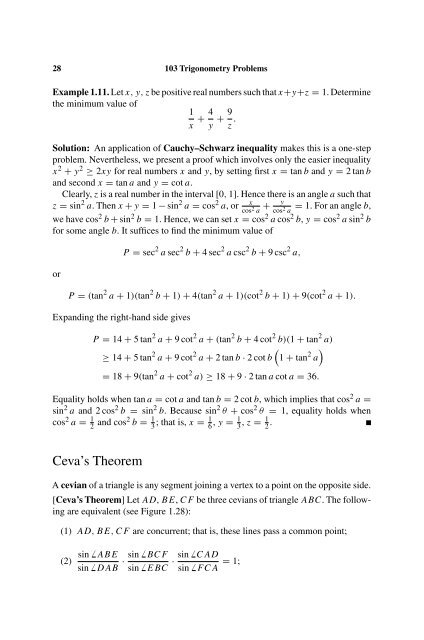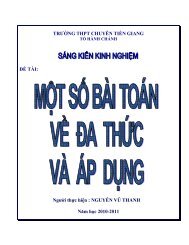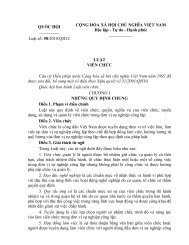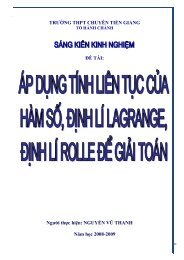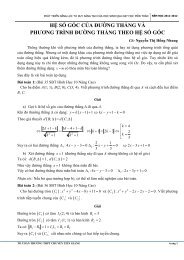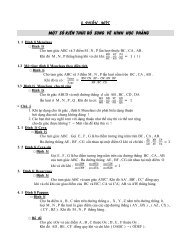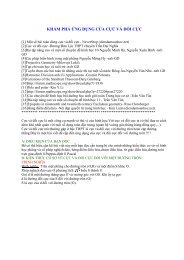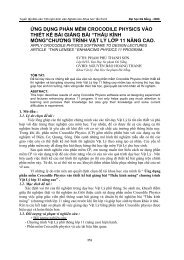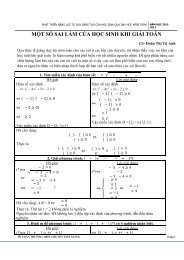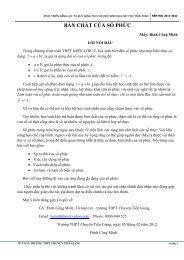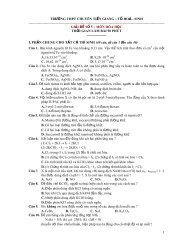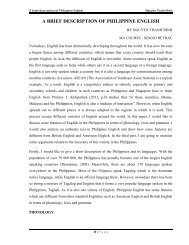103 Trigonometry Problems
103 Trigonometry Problems
103 Trigonometry Problems
You also want an ePaper? Increase the reach of your titles
YUMPU automatically turns print PDFs into web optimized ePapers that Google loves.
28 <strong>103</strong> <strong>Trigonometry</strong> <strong>Problems</strong><br />
Example 1.11. Let x,y,zbe positive real numbers such that x+y+z = 1. Determine<br />
the minimum value of<br />
1<br />
x + 4 y + 9 z .<br />
Solution: An application of Cauchy–Schwarz inequality makes this is a one-step<br />
problem. Nevertheless, we present a proof which involves only the easier inequality<br />
x 2 + y 2 ≥ 2xy for real numbers x and y, by setting first x = tan b and y = 2 tan b<br />
and second x = tan a and y = cot a.<br />
Clearly, z is a real number in the interval [0, 1]. Hence there is an angle a such that<br />
z = sin 2 a. Then x + y = 1 − sin 2 a = cos 2 x<br />
a,or<br />
cos 2 a + y = 1. For an angle b,<br />
cos 2 a<br />
we have cos 2 b + sin 2 b = 1. Hence, we can set x = cos 2 a cos 2 b, y = cos 2 a sin 2 b<br />
for some angle b. It suffices to find the minimum value of<br />
or<br />
P = sec 2 a sec 2 b + 4 sec 2 a csc 2 b + 9 csc 2 a,<br />
P = (tan 2 a + 1)(tan 2 b + 1) + 4(tan 2 a + 1)(cot 2 b + 1) + 9(cot 2 a + 1).<br />
Expanding the right-hand side gives<br />
P = 14 + 5 tan 2 a + 9 cot 2 a + (tan 2 b + 4 cot 2 b)(1 + tan 2 a)<br />
( )<br />
≥ 14 + 5 tan 2 a + 9 cot 2 a + 2 tan b · 2 cot b 1 + tan 2 a<br />
= 18 + 9(tan 2 a + cot 2 a) ≥ 18 + 9 · 2 tan a cot a = 36.<br />
Equality holds when tan a = cot a and tan b = 2 cot b, which implies that cos 2 a =<br />
sin 2 a and 2 cos 2 b = sin 2 b. Because sin 2 θ + cos 2 θ = 1, equality holds when<br />
cos 2 a = 1 2 and cos2 b = 1 3 ; that is, x = 1 6 , y = 1 3 , z = 1 2 .<br />
Ceva’s Theorem<br />
A cevian of a triangle is any segment joining a vertex to a point on the opposite side.<br />
[Ceva’s Theorem] Let AD, BE, CF be three cevians of triangle ABC. The following<br />
are equivalent (see Figure 1.28):<br />
(1) AD, BE, CF are concurrent; that is, these lines pass a common point;<br />
(2) sin ̸ ABE<br />
sin ̸ DAB · sin ̸ BCF<br />
sin ̸ EBC · sin ̸ CAD<br />
sin ̸ FCA = 1;


